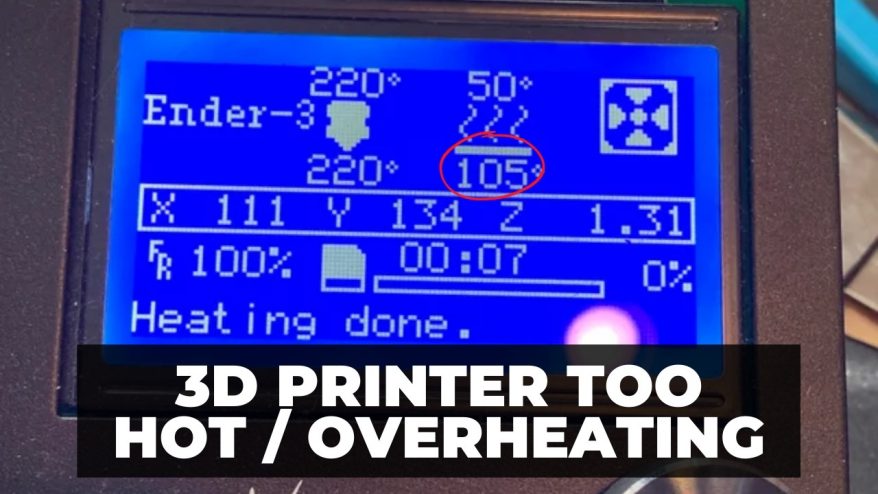
3D Printer Too Hot / Overheating: All 5 Reasons Fixed


At 3DSourced we’ve covered everything 3D printing and 3D since 2017. Our team has interviewed the most innovative 3D printing experts, tested and reviewed more than 20 of the most popular 3D printers and 3D scanners to give our honest recommendations, and written more than 500 3D printing guides over the last 5 years.
Temperature control is a key part of 3D printing. If your 3D printer is too hot, then it can lead to disastrous consequences like overadhesion, melting between layers, and unsightly blobs and zits. Overheating could even be dangerous.
While it may just come down to incorrect settings, there are a few issues that could cause your 3D printer to run hotter than it should.
If you’re not sure how or why your 3D printer is overheating, then be sure to look at each of the possible causes below and follow our guides for how to fix each one.
Why your 3D printer is too hot or overheating?
Can 3D Printers Overheat?
3D printers can overheat for a variety of reasons, including insufficient settings, wrong filament selection, or even hardware malfunctions.
If any part of your 3D printer, like the extruder or heat bed, is too hot, then your models and even the printer itself will suffer as a result, wearing down your parts, damaging your build plate, and poor layer adhesion.
How Do I Know if My 3D Printer is Too Hot?
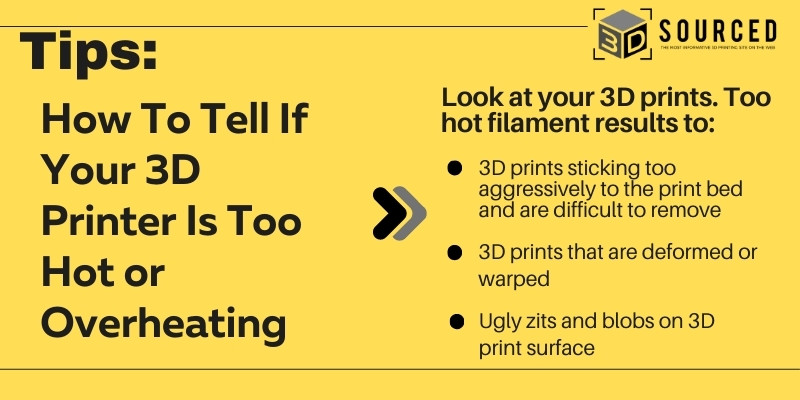
The main way to tell if your 3D printer is running too hot is the end results. Overheated filament will take longer to cool down, and so not set fast enough. This leads to a few issues including:
- Over-adhesion to the print bed
- Deformed or warped prints
- Improper and ugly zits and blobs between the layers.
Overheated filament will adhere too well to your printer bed. This is because it stays too warm in its initial layers and sticks too aggressively.
Even if the rest of your print comes out well, the over-adhered filament will be difficult to remove from the build plate and you could risk damaging the model or even the bed itself in trying to remove it.
If your filament doesn’t set fast enough then it will also continue to melt over the layers, leading to ugly, deformed prints that are frustrating to see and are a waste of filament.
What Causes 3D Printers to Overheat? Causes and Solutions
As already mentioned, the problem with overheating printers is often to do with settings choices. If you’re noticing problems resulting from your 3D printer running too hot, then you should consider the following causes and solutions:
Extruder Temperature Too High
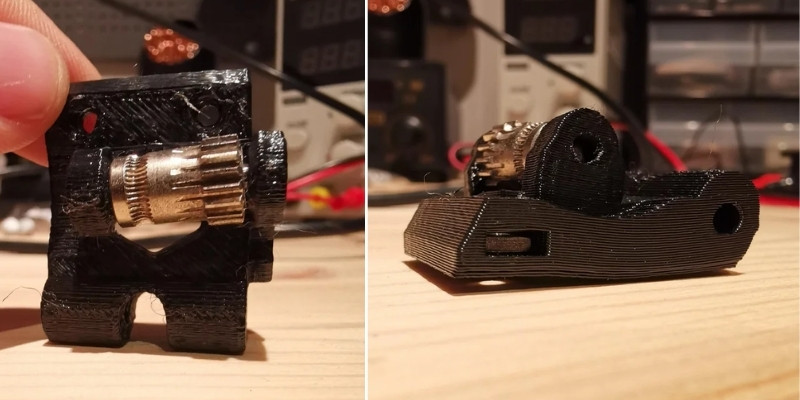
The most likely cause of overheating is simply that the extruder temperature is set to too high for the filament you’re using. This is a particularly common problem if you’ve recently changed to a lower temperature filament like PLA, but have forgotten to change the settings.
An overheated extruder could also damage the nozzle itself. So always be sure you’re using an appropriate temperature for your filament.
What Happens if a 3D Printer Nozzle is Too Hot?
If the printer nozzle is too hot then you’ll find your filament stays too liquified for too long. This leads to drooping between most if not all your model’s layers, over-adhesion to the print bed, and unsightly blobs and zits forming.
Overall, if your model is warped throughout, then the problem could be that your extruder temperature is set too high.
How to Fix
The first step to fixing a too high extruder temperature is to simply double-check and cross-reference the settings you’re currently using with those recommended by the filament manufacturer.
If you find you are using a temperature within the recommended range but are still having issues with 3D printer overheating, then try lowering the print temperature in 5℃ increments until you find the perfect setting.
Insufficient Cooling
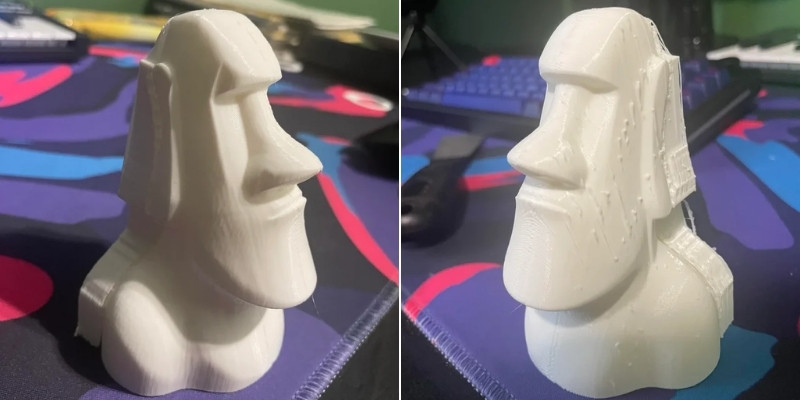
The problem with overheating isn’t always solely due to the printer itself being too hot, but rather the filament not being cooled fast enough.
If your cooling fan is set too low, then the filament will stay too hot for too long and not settle properly as it should.
If you’re using the appropriate heat settings for your filament in both your extruder and your heat bed, then the problem is likely due to your cooling fan being set too low.
How to Fix
Of course, the easy fix is to simply increase your cooling fan’s speed. However, too much cooling is also an issue. If your filament cools and sets too quickly, then it won’t adhere to either the bed or the layers correctly and lead to a new host of issues.
The best fix is to incrementally increase your cooling fan speed with small test prints until you find which setting is perfect.
Be sure to mark down the ideal setting when you find it for future reference, as you may need to adjust the cooling again if you switch filament types or need to alter the printing temperature later.
Print Bed Temperature Too High
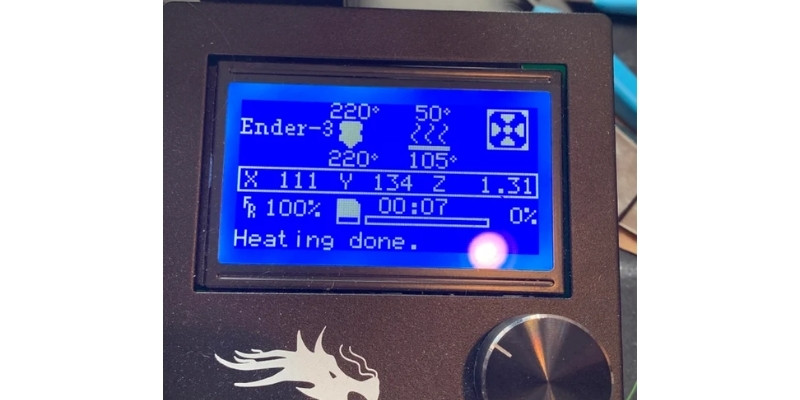
If you’re using a print bed, you may find that you’re running it too hot for the filament you’re using, or that your filament may not need a heated bed at all.
What happens if a 3D Print Bed is Too Hot?
If you find that overheating is more of a problem in your initial layers than later on in the print (for example, if your print turns out fine in its top layers but is warped or over-adhering to the plate early on), then the problem is likely with a too hot built plate than the extruder or cooling fan.
How to Fix
Much like if your extruder is too hot, the key to fixing it is to decrease the heat bed temperature in small increments until you find the setting that works best. Again, it’s best to check the manufacturer’s recommended settings and go towards the lower end of the scale if you’re already using the correct settings.
It’s also worth noting that not all filaments require a heated bed to work. PLA, for example, normally works well enough without using a heated built plate, so it could be worth turning off the heated bed altogether if it’s running too hot depending on the filament you’re using.
Printing Too Fast
If your temperature settings and cooling fan settings are all ideal but your filament still isn’t setting fast enough, then the problem could be with your print speed.
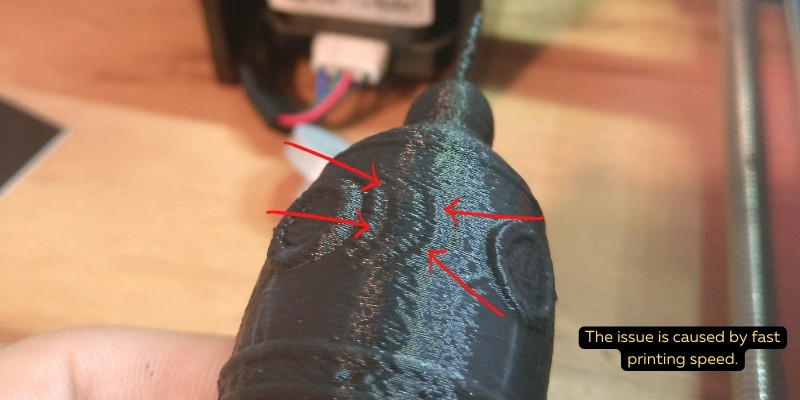
Printing too quickly won’t give your individual layers a chance to solidify, and they’ll stay in a semi-liquid state for too long as you print, leading to an effect that mimics problems with 3D printer overheating.
How to Fix
In most cases, slower print speeds lead to higher-quality prints. If you lower your speed settings gradually then you may find that not only are your overheating problems solved, but your models will turn out better than they did before.
Printing Multiple Parts at Once

Different parts of any given structure will print better with different temperature settings. Bridges, for example, need to be printed at cooler temperatures so they set faster and don’t droop.
If you find that most of your model’s parts are printing fine, but some appear overheated, then the problem could be that one temperature simply isn’t working for every part of your model
How to Fix
Increasing the cooling fan speed only for those trickier parts is the best way to combat the issue with only certain pieces of a model overheating.
It’s also worth considering that, depending on the model, it could be ideal to instead print these parts separately with different settings and glue them on later.
Related posts:




















